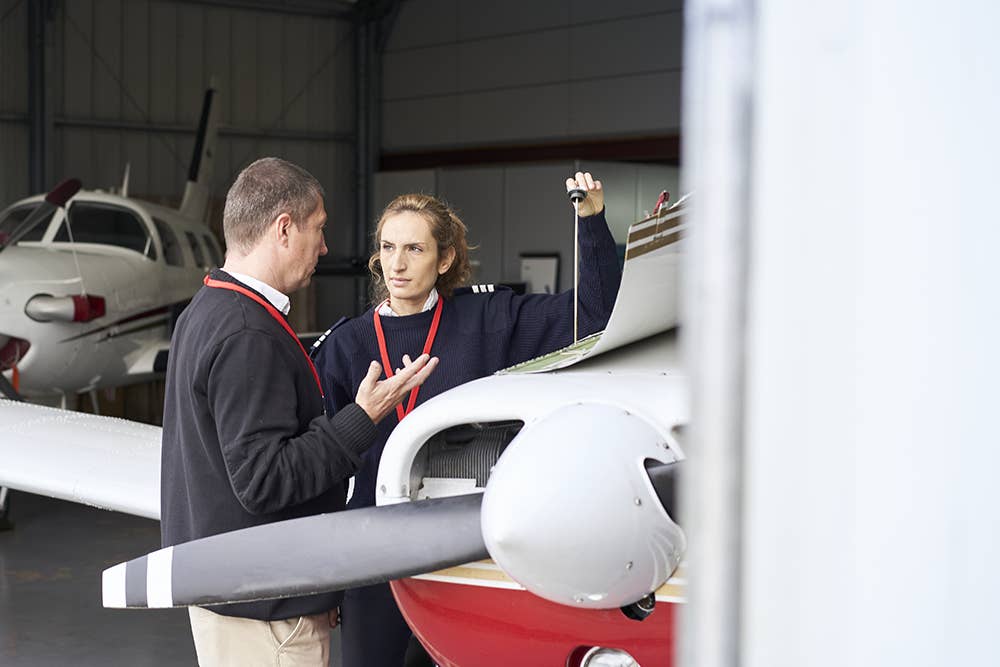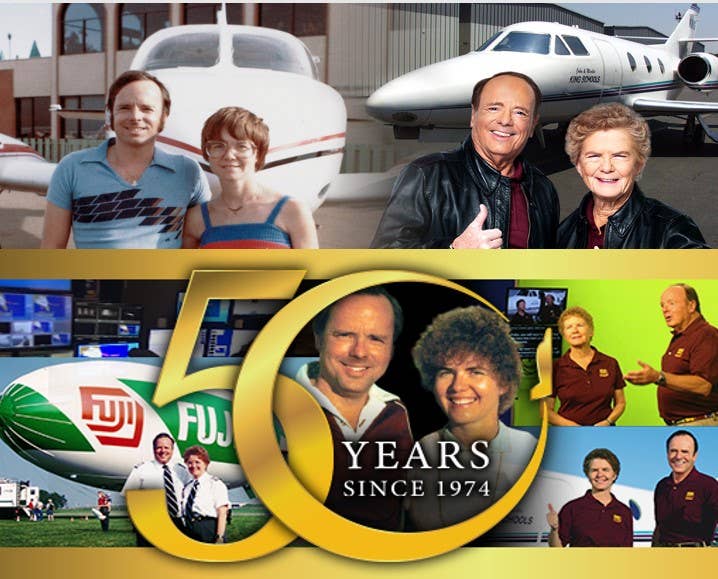Flight Schools: Farm Teams for the Airlines
FLYING staff writer and CFI shares story of a student recruited by an airline right out of flight school.

Today, many airlines are using stipends to help their future captains and first officers pay for their training—even when they are years away from the flight deck of a jet. [File Photo: Adobe Stock]
Editor’s note: This article is the third in a six-part series examining the aviation industry’s pilot shortage and what can be done about it.
Jan. 14: An overview of the issue | Jan. 17: How the military is dealing with its shortage | Jan. 18: Recruiting right from the flight schools | Jan. 19: Outreach programs do their part | Jan 20: The role of flight schools in creating pilots | Jan 21: Want to get your chops back? Here’s how.
I will never forget the day this particular 20-year-old came into the flight school at which I worked to inquire about training toward an airline career. When I told him the cost of training up through the multiengine commercial certificate, he asked if I would train him pro bono if he promised to pay me back when he was hired at the airlines. I said no. Then Captain Pro Bono then switched tactics, saying he heard that the airlines need pilots so he would “call one of them” to make arrangements for them to pay—because he was going to work for them, so it just seemed fair.
While some may have laughed at his audacity (not me—I was thinking about avalanches and famine to avoid cracking a smile), he wasn’t too far off.
Today, many airlines are using stipends to help their future captains and first officers pay for their training—even when they are years away from the flight deck of a jet.
Recruiting at the FBO
Several airlines use pilot development programs to accelerate the process of finding qualified pilot candidates. Candidates are recruited while still in flight school—in some cases when the ink is barely dry on their private pilot certificate. They’re given conditional offers of employment, and a stipend to pay for training which, in theory, will accelerate the process and get them into an airline new-hire class and into the cockpit of a jet sooner rather than later.
These folks must reach a certain level of certification—usually at least commercial multiengine and a specific number of hours (often ATP minimums)—and then they’re invited to attend a new-hire class.
Some airlines even provide the candidates with a hiring bonus, which the savvy candidates use for training and time building. One of these candidates is 30-something Kevin Peterson from Seattle.
Meet One Such Student
Aviation runs in Peterson's family. His grandfather was a pilot in the U.S. Air Force during the Cold War, and his father had an interest in aviation, which included having Microsoft Flight Simulator loaded onto his work computer.
"If he couldn't find a sitter for me as a kid, he would take me to his office and encourage me to play Microsoft Flight Simulator on his computer when he wasn't using it,” Peterson said. “I was hooked!"
He took an introductory flight at a local airport the summer before starting high school—he loved it and started to make plans for a career in aviation. But, as John Lennon once said, "Life is what happens when you are busy making plans." As high school went on, Peterson found another interest—music—which started to develop and grow.
"Halfway through high school, I was sure I wanted to be a professional musician, so I attended St. Olaf College in Northfield, Minnesota, to earn a Bachelor of Music degree in piano performance," he recalls. "However, partway through that program, I realized I in no way wanted to spend six to eight hours every day practicing piano by myself in a 4-by-8-foot practice room for at least six years worth of graduate school, with only a chance of a teaching job at whatever random university might be willing to hire me."
After earning his degree, Peterson returned to Seattle with the intention of becoming a professional pilot. He worked full-time as a piano teacher, church music director, and freelance musician to pay for his flying lessons. In 2019, Peterson was one of hundreds of local pilots attending recruitment seminars presented by regional airlines. These seminars, offered at tradeshows and FBOs around the country, are designed to attract potential employees by helping them pay for training and time building. The pilots have to apply for the program, but if accepted, they are given money to help pay for training thus expediting the process.
“Peterson chose Horizon Air because it offered an early sign-on bonus. He received his first check for $7,500 right after earning his commercial certificate.”
Peterson chose Horizon Air because it offered an early sign-on bonus. He received his first check for $7,500 right after earning his commercial certificate. His next challenge was finding a CFI who had the time and experience to train him to be a flight instructor.
The flight school he was training with didn’t have anyone who could train him. Under Part 61, to administer training for the initial CFI certificate, the training instructor must have held their CFI certificate for at least 24 months and given at least 200 hours of training. As the airlines were hiring, the flight school had a “revolving door,” with CFIs disappearing in weeks or months, and not staying around long enough to reach the 24-month and 200-hour mark.
Interesting Timing Plays a Part
Peterson went to a competing FBO where the chief CFI specialized in CFI training. He finished his certificate just as the pandemic hit and the airlines started to scale back. While some might say the timing was terrible, Peterson used it to his advantage.
"I will say having that cash early on from Horizon was a big boost toward not only earning my CFI—since I got the check for $7,500 right after earning my commercial, as required by Horizon for them to cut the check—but also allowed me to work on my CFI-I and multi add-on during the pandemic while I was waiting to get hired somewhere," says Peterson.
That “somewhere” is Cascade Aviation, located at Skagit-Bayview Regional Airport (KBVS) north of Seattle. Peterson needs to reach ATP minimums before he is eligible for a class at Horizon (more on those metrics later). As this story was going to press, Peterson was approaching 1,000 hours, and happily exercising those teaching skills he developed on the piano bench and refined in the cockpit.
FBOs Feeling the Pinch
When airlines are hiring, FBOs face a double-edged sword: They have lots of people coming in looking for training, but they may not have enough CFIs or aircraft to handle the demand. The CFIs are often flying eight hours a day, sometimes six or seven days a week, which handles the client load and gets the CFI to hiring minimums faster. When they leave, the FBO needs to find another CFI.
The savvy flight school owners use the training demand to their advantage, looking for flight students who want to be trained from private pilot to CFI, and who agree to work at the school for at least a year before they head to the airlines.
Some instructors opt for accelerated programs to get their advanced certificates and that all important multiengine experience, then return to their flight schools to build hours while sending out applications to different airlines hoping to be hired and get a class date. The downside of some of the accelerated instructor programs is that although the applicant has the certificate, he or she may not be much of a teacher yet. This is where it helps to find an aviation mentor who can help find the answers to important questions like “When is my learner ready to solo?” (FAR Part 61.87 lists the 15 things they need to know and be able to do before their first solo.)
The Power of an Aviation College Degree
There was a time when a lack of a college degree would keep a person out of the airlines. This is no longer the case, as the airlines are more focused on the applicant's flight experience level rather than academic pedigree.
However, attending a qualifying aviation college can put prospective pilots on the fast track to an airline flight deck. One of the benefits of attending an aviation college and earning a degree is that it can make the prospective pilot eligible for the restricted airline transport pilot certificate.
The R-ATP certificate was created in 2013. It allows pilots to act as second in command in transport-category aircraft under Part 121 with less than 1,500 hours. You can find the details under FAR 61.160 (f), 61.159 (b).
Basically, to qualify for the R-ATP with 1,000 hours, the pilot must be at least 21 years of age and hold a bachelor's degree with an aviation major from specific university programs.
Pilots who hold an associate degree with an aviation major from specific university programs and meet the minimum age requirement can qualify with 1,250 hours of flight time.
For the non-aviation college graduate, you need 1,500 hours, including 75 night hours and 200 cross-country hours.
There are reduced experience requirements for those coming from a military flying background as well.
In addition, most aviation colleges have connections with airlines, both regionals and legacy, and their representatives routinely visit colleges and universities looking for talent and have programs in place to 'grow their own.'
For example, Delta Airlines has Delta Propel, "designed for aspiring professional pilots who are enrolled in colleges and universities with aviation programs."
Skywest has its Pilot Pathway Program, which according to the website "provides a direct path for exceptional pilots with a desire to take control of their aviation careers." The program offers the candidates “enhanced seniority, guaranteed final interview and access to pilot mentors.” The air carrier has ties to several schools and according to the website, Skywest Cadets receive up to a $12,500 tuition advance and $5,000 upon successful completion of SkyWest’s initial operating experience (IOE).According to their marketing, Skywest has partnerships and relationships with hundreds of flight schools around the country.
“This has allowed us to connect with pilots who are just starting their training, along with those who are ready to transition to commercial flying. As a result, our training classes are staying full as we continue to grow and add new aircraft to our fleet.”

Subscribe to Our Newsletter
Get the latest FLYING stories delivered directly to your inbox






